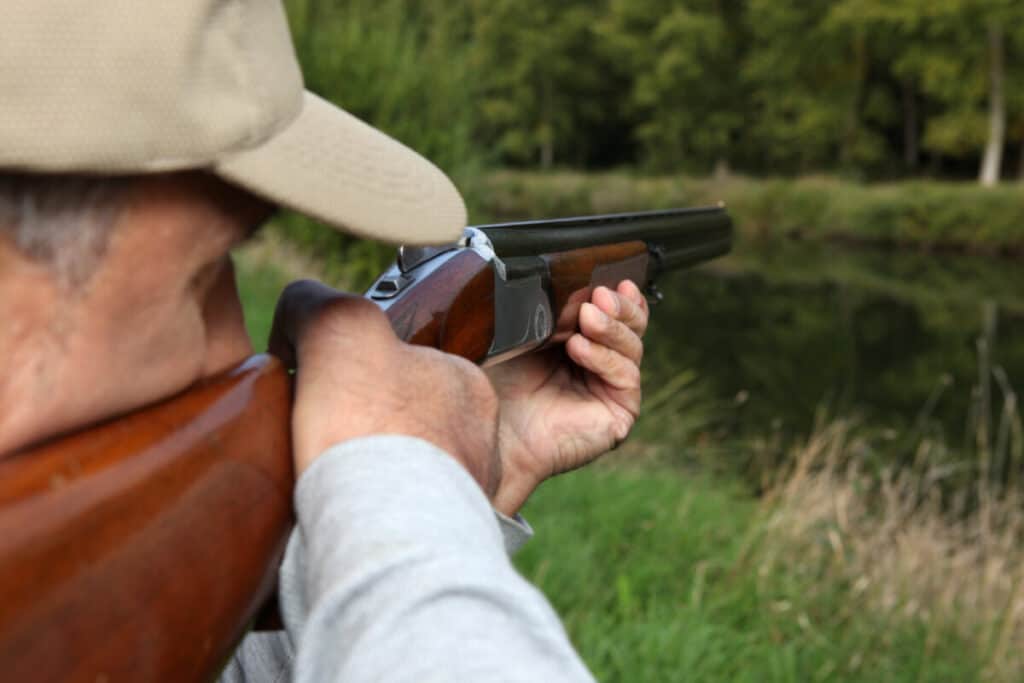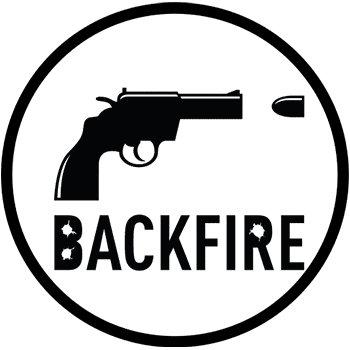This is Why Shotguns Don’t Have Rear Sights

Many modern firearms have iron sights, and they are used as a way of aiming the firearm at a target. While rifles and pistols will have both a front and rear sight to align for greater accuracy, a shotgun will most likely only have one at the front. The rear sight isn’t being left off by accident, and in fact, the shotgun is better off without it.
A shotgun is designed to shoot a number of small pellets instead of a single bullet. When the pellets leave the barrel, they spread apart from one another. This expanding effect means that a precise point of aim is less important, and so the rear sight is omitted on most shotguns.
This explains why a lack of a rear sight doesn’t necessarily decrease the effectiveness of a shotgun. But, there is more to it than that because the lack of a rear sight on a shotgun is beneficial. And of course, there are exceptions as well.
Reasons Why Shotguns Do Not Have Rear Sites
Here is why shotguns do not have rear sites.
Information Paralyzation
Imagine you were offered a test drive in a car from the not-too-distant future. In addition to common features you are familiar with from driving the automobiles of the present, this car comes with some new bells and whistles. Some of these include the distance between you and the car in front of you being displayed down to the tenth of an inch, and barometric pressure is monitored by external sensors. Every time the car accelerates the voice of Al Gore can be heard saying “I warned you this would happen” while your blood pressure is simultaneously shown on the heads-up display.
Just because all information is presented to you is unquestionably accurate, you might feel that it is unnecessary to the task of driving a vehicle down the road. Should you end up buying this vehicle, you would probably find a way to disable some of these features, or at least learn to ignore them. At best, they are a distraction, while at worse they occupy attention that could be used elsewhere.
Feelings are Important
Using a shotgun has many similarities to the above scenario. Shotguns, more so than other firearms, are shot by feel. There are some technical principles to being an effective shooter while using a shotgun, but once these are learned they very much so become part of muscle memory. Furthermore, because shotguns specialize in shooting flying targets, such as birds or clay pigeons, many shots taken are of a time-sensitive nature.
Sometimes a shot needs to be taken quickly because a target is moving into, or out of, an ideal range. Many hunters have learned that not everything flies or runs in a predictable manner, so “getting on target” while there is an opportunity for a shot needs to be done quickly.
Because of these factors, the rear sight is omitted on most shotguns as a way of helping the shooter quickly line up an acceptable shot by only using the front sight. Oftentimes, after a shooter identifies a target and brings the shotgun up for a shot, only a quick adjustment is made before the shot is taken. Shooting a shotgun rarely involves a lengthy thought process.
Range is Critical
Another reason that feel and timing are important to shotgun shooting is because of the nature of shotgun ammunition. A shotshell will contain a payload of small, round pellets call “shot”, and the number of these can range from less than a dozen all the way up to several hundred. Typically, inside the shell, the shot will be held in a group by a plastic or nylon cup.
When a shotshell is fired, this cup will act as a barrier between the gases created by the gunpowder and the payload. The rapidly expanding gases create pressure and begin pushing the cup forward and toward the end of the barrel. While the shot is inside the barrel, it travels together with the cup because there is nowhere for it to go but forward. But, this affinity for one other is not meant to last.
When the pressure finally pushes the cup out of the barrel, both it and the shot begin to experience drag forces due to the atmosphere. Drag has a far greater effect on the cup due to it having a large surface area and being made out of lightweight material. It will slow down and separate from the shot.
The shot itself won’t speed up, as once it leaves the barrel it will no longer increase in velocity, but it will be less affected by the drag forces of flying through the air.
What the shot will do though, is beginning to spread apart and form what is called a shot cloud. The shot will continue to spread apart until the pellets are so far apart from each other that they can pass by the target without hitting it. This gives the shotgun a very limited ideal range to engage a target.
Too close and it can be difficult to hit a small target, too far away and it is inconsistent or ineffective.
Now, this range is user adjustable to a certain degree. A number of things can be changed, such as constricting the barrel of the gun with a screw-in choke or selecting different ammunition. But generally, these choices are made beforehand based on which shooting situation the shooter believes he will be placed in.
Sometimes, such as in competitive shooting, there is a set routine and the shooter will know in advance what to plan for. But often when hunting it is the best guess as to what the shooter believes they will encounter.

The Exceptions
This article would not be complete if I did not briefly explain that some shotguns do have rear sights. The primary reason why a shotgun includes a rear sight is to shoot slugs with greater accuracy. A slug, being a solid piece of metal, will neither expand nor spread apart after leaving the barrel. Because of this, the greater degree of precision offered by a rear sight becomes very beneficial. The most common reasons a person would want to shoot a solid object out of a shotgun are self-defense and big game hunting.
And while a shotgun will never match the range or accuracy of a rifle, there are still reasons why they are used in this role.
